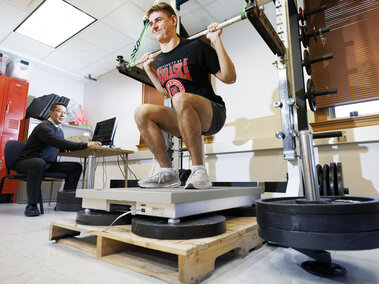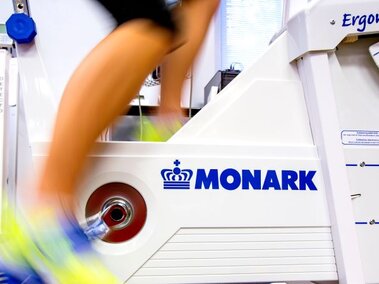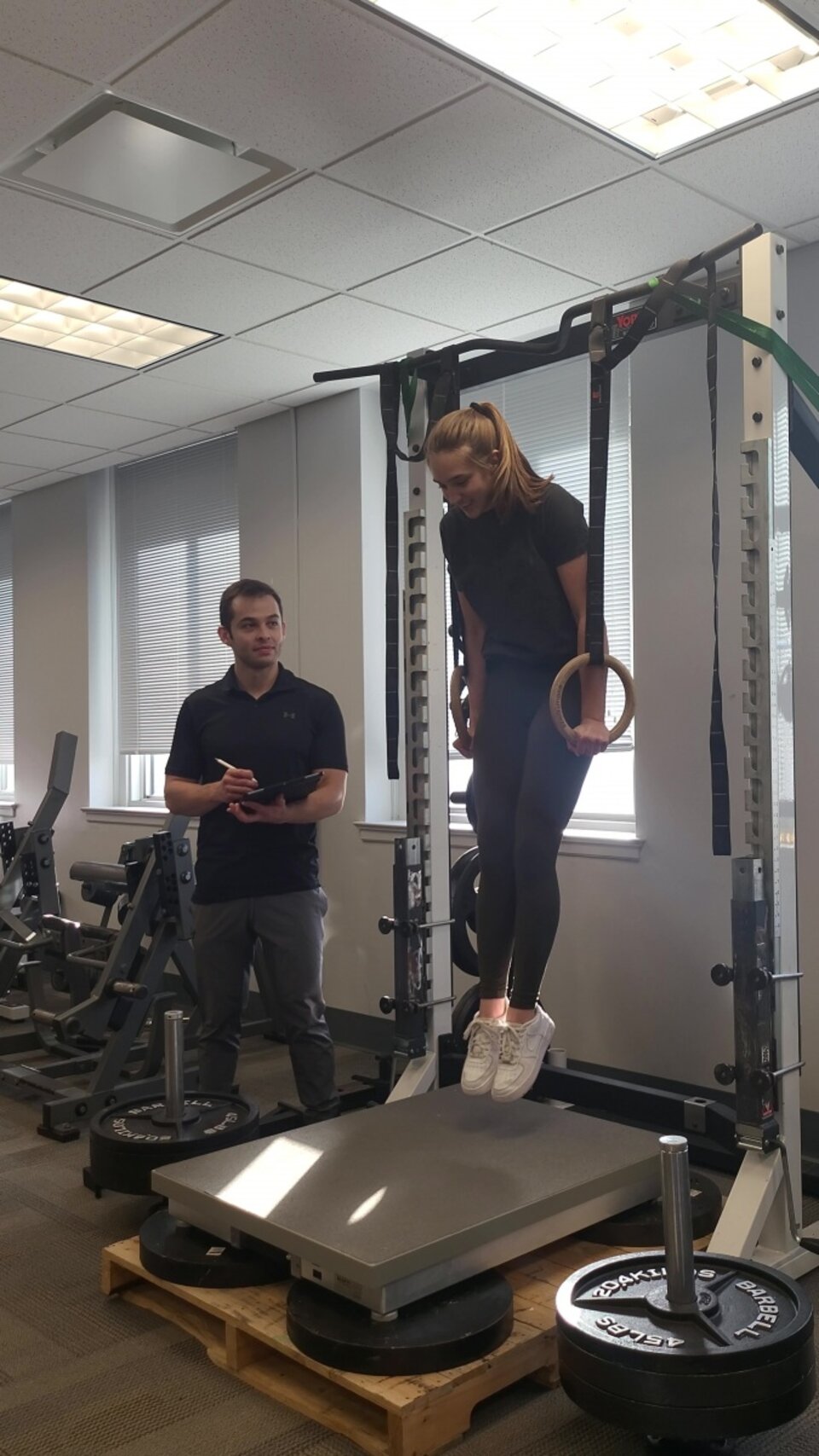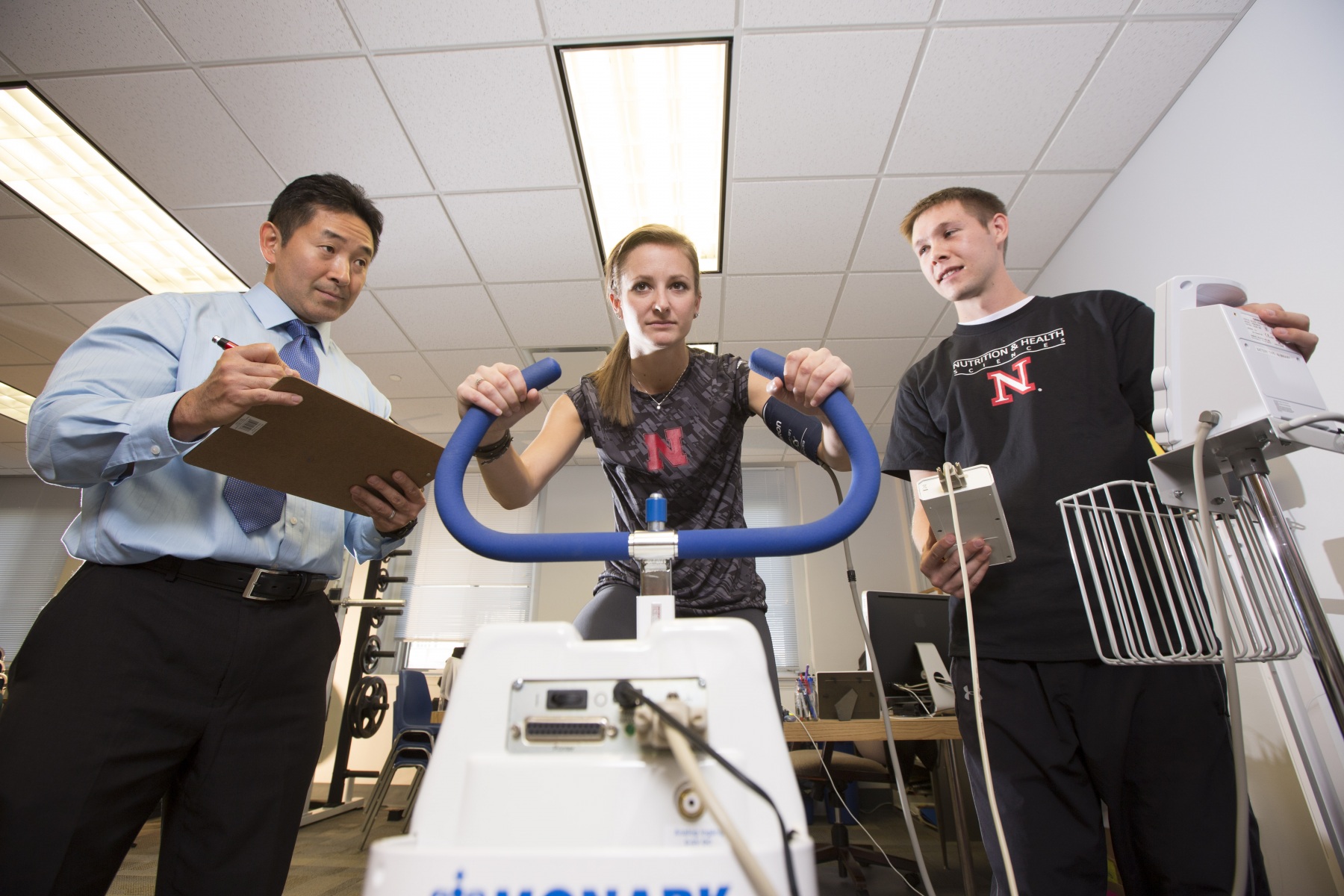The Wellness Assessment Laboratory, directed by Dr. Shinya Takahashi, is a research and educational laboratory located in Ruth Leverton Hall on the University of Nebraska-Lincoln's East Campus.
Equipped with advanced diagnostic and measurement tools that enable comprehensive analysis of human physiological responses to exercise, the lab's featured tools and equipment include:
- portable force plate
- bioelectrical impedance (BIA) machine
- anthropometric devices
- reflectance photometry blood analysis machine
- tri-axial accelerometers
- treadmill
- cycle ergometer
- free weights
- power rack
Students gain invaluable practical experience through hands-on training in fitness evaluation, health assessment protocols, and data collection methods.
Primarily utilized for educational purposes, the lab provides students with real-world experience in understanding how the human body adapts and responds to physical exercise through fitness testing and human performance assessment.



Research
Analysis of Dietary Intake, Body Composition, Blood Chemistry Profile, Physical Fitness, and Physical Activity Trends in College Students
This study examines various aspects of wellness among college students, including dietary practices, physical activity levels, physical fitness, blood chemistry, and body composition. The following measurements were collected during the study:
- anthropometric (i.e., height, body mass, hip and waist girths)
- body composition
- blood pressure
- resting heart rate
- physical fitness level
- physical activity level
- dietary practice
- blood chemistry data
By analyzing the aggregated data, researchers aim to establish a baseline understanding of college students' overall health and wellness. The findings will also help determine the need for targeted wellness intervention programs on college campuses.
Correlations Between Dynamic One Repetition Maximum Squat and Maximum Voluntary Isometric Squat in Recreationally Trained College-aged Individuals
This study explores the relationships between dynamic one repetition maximum (1RM) squat exercise (the maximum amount of weight that an individual can lift only one time) and 4 different knee angles of maximum static squat exercise (the maximum effort to push against an immovable weight training bar) in recreationally trained, college-aged individuals.
The findings from this research provide insights into the force development characteristics of dynamic and static squat exercises. Additionally, this data may help identify appropriate resistance levels for individuals starting the squat exercise. These levels can be estimated using forces measured during the static squat exercise, eliminating the need for the time-consuming process of measuring an individual's 1RM.

Lab Members

Shinya Takahaski
Associate Professor of Practice, Associate NHS Department Chair, and CEHS Academic Program Lead
stakahashi3@unl.edu
Bio
Former Lab Members

Sadio Fenner
- Graduated May 2024 from the University of Nebraska-Lincoln with an MS in Nutrition and Exercise
- Worked with the Wellness Assessment Lab as a teaching assistant for NUTR 100, NUTR 150, and NUTR 488
- Now pursuing a doctorate in Exercise Physiology at Florida State University

Carlos Guzman
- Graduated May 2023 from the University of Nebraska-Lincoln with an MS in Nutrition and Exercise

Emma Worley
- Graduated May 2022 from the University of Nebraska-Lincoln with an MS in Nutrition and Exercise
- PhD student and football sports science graduate assistant at the University of South Carolina
In the News
Publications
Selected Publications
2019
Murphy, C., Takahashi, S., Bovaird, J., & Koehler, K. (2019). Relation of aerobic fitness, eating behavior, and physical activity to body composition in college-age women: A path analysis. Journal of American College health. doi: 10.1080/07448481.2019.1647210
Garcia AS, Takahashi S, Anderson-Knott M, Dev D. Determinants of physical activity for Latino and white middle school-aged children. J Sch Health. 2019; 89: 3-10. doi:10.1111/josh.12706
